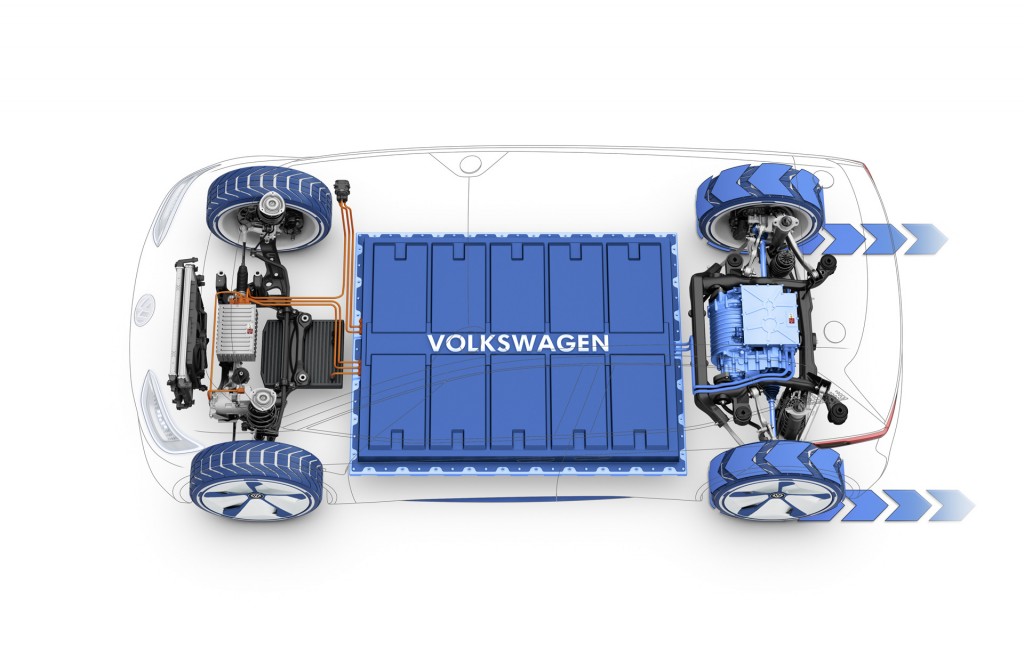The Volkswagen e-Golf will arrive in dealerships this spring with a higher-capacity battery pack that gives the electric car an EPA-rated 124 miles of range.
The number equals the rating of the 2017 Hyundai Ioniq, and is the highest range offered by any electric car that's not a Chevy Bolt EV or a Tesla.
Whether this boosts the allure of the German hatchback's all-electric version against Chevrolet's range advantage of 114 more miles remains to be seen.
DON'T MISS: Volkswagen ID: more details of all-electric concept car at Paris Motor Show
But it appears the e-Golf won't be a permanent addition to the Golf model lineup, which in the U.S. now spans three- and five-door hatchbacks, the wagon previously sold as a Jetta and known as the SportWagen, and the GTI "hot hatch" performance version.
Instead, it appears that the electric version of the Golf will last only one generation, according to a report last month in the British outlet Autocar.
The article discussed the upcoming eighth generation of the venerated VW Golf, which will replace the model that launched late in 2012 in Europe but as a 2015 model in the U.S.

2017 Volkswagen e-Golf
That delay was due to a switch in production for Golfs sold in North America from Germany to Mexico, joining the Jetta that has been built there for several generations.
The Golf 8, as it's known, will arrive late in 2019 as a 2020 model in Europe—perhaps a year later for the U.S. if history is any precedent—and Autocar suggests its GTI hot-hatch version will use a 48-volt mild-hybrid powertrain that will consume less fuel while boosting both performance and refinement.
READ THIS: VW ID Buzz concept: all-electric Microbus could arrive in 2022
The e-Golf won't be a part of the Golf 8 range, however: the magazine suggests that role will be assumed by the production version of the Volkswagen ID electric hatchback concept car revealed at last fall's Paris Motor Show.
While Autocar didn't cover it, the eighth-generation Golf lineup seems likely to retain the Golf GTE plug-in hybrid model now sold in Europe.

2017 Volkswagen e-Golf
That version isn't now offered in North America, though its underpinnings are similar to those used in the Audi A3 SportBack e-tron on sale in the U.S. for more than a year now.
Along with a possible ID Buzz electric microbus a couple of years later, the all-electric ID hatchback will be one of up to 30 electric cars VW Group plans to launch by 2025 throughout its sprawling portfolio of brands.
The Volkswagen ID concept was the first released on a new set of underpinnings known as "MEB" that VW plans to use for the vast majority of its electric offerings.
CHECK OUT: VW plans to build electric cars somewhere in N America after 2020
Unlike the current Chevy Bolt EV or Nissan Leaf, the Volkswagen ID Concept has a 125-kilowatt (168-horsepower) electric motor mounted in the rear, powering the rear wheels—like the BMW i3.
Along with a flat battery pack under the floor, that gives its designers far more flexibility in design, permitting a shorter and lower nose.
It also makes frontal crash protection easier to engineer, by providing a larger crush space without having to accommodate a large, uncrushable metal engine and transmission unit sitting between the front occupants and whatever the car hits.

Volkswagen I.D. electric car concept, 2016 Paris auto show
The production version of the ID Concept will be the first vehicle built on VW's new MEB modular architecture, designed specifically for electric vehicles.
It will also accommodate a fully automated driving mode that Volkswagen expects to roll out in 2025.
The MEB architecture is characterized by a long wheelbase with short overhangs, a tight turning circle, the flat battery pack under the floor, and a multi-link rear axle mounted in a subframe.
_______________________________________













